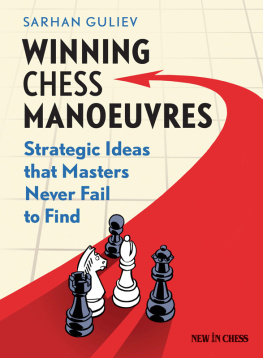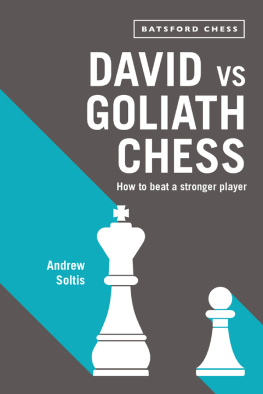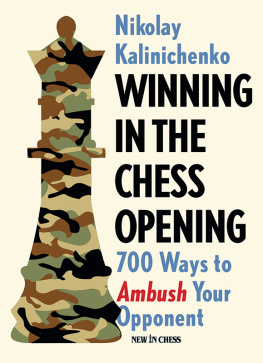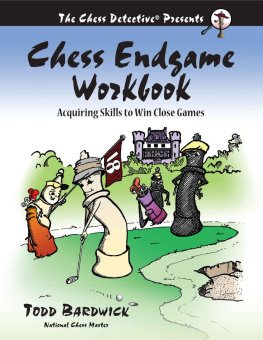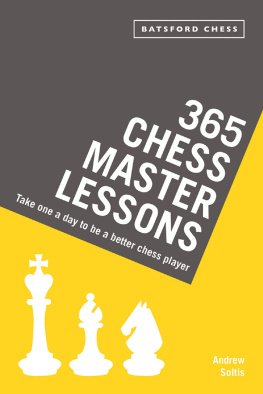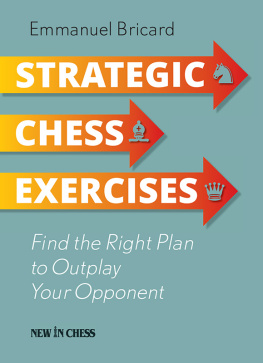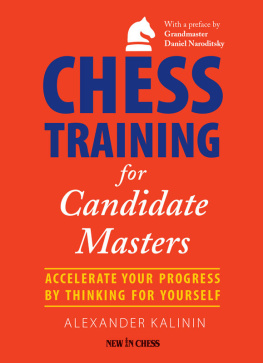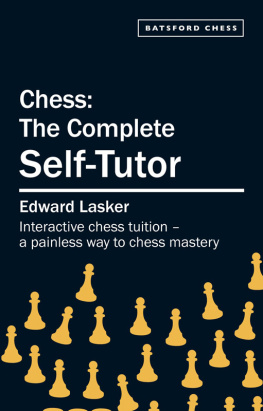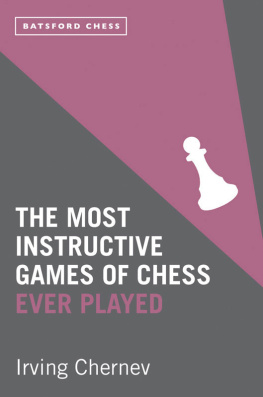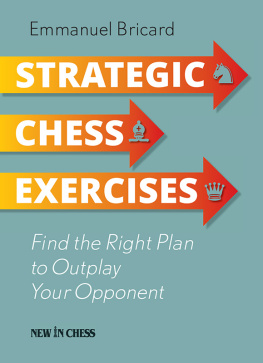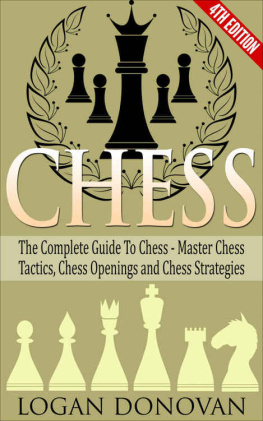Winning Chess Manoeuvres
Sarhan Guliev
Winning Chess Manoeuvres
Strategic Ideas that Masters Never Fail to Find
New In Chess 2015
2015 New In Chess
Published by New In Chess, Alkmaar, The Netherlands
www.newinchess.com
All rights reserved. No part of this book may be reproduced, stored in a retrieval system or transmitted in any form or by any means, electronic, mechanical, photocopying, recording or otherwise, without the prior written permission from the publisher.
Cover design: Volken Beck
Translation: Steve Giddins
Supervisor: Peter Boel
Proofreading: Ren Olthof
Production: Anton Schermer
Have you found any errors in this book?
Please send your remarks to and implement them in a possible next edition.
ISBN: 978-90-5691-568-1
Explanation of Symbols
The chessboard with its coordinates:


| White to move |

| Black to move |
K | King |
Q | Queen |
R | Rook |
B | Bishop |
N | Knight |

| White stands slightly better |

| Black stands slightly better |

| White stands better |

| Black stands better |
+ | White has a decisive advantage |
+ | Black has a decisive advantage |
= | balanced position |
! | good move |
!! | excellent move |
? | bad move |
?? | blunder |
!? | interesting move |
?! | dubious move |
unclear |
# | mate |
Foreword
The reader could get the wrong impression about the aims of this book. He might think that the author is trying to show that people play chess wrongly, and that they are poorly informed about the games classical heritage or inaccurately point out the original sources of ideas, etc.
But that is not the case. The chess elite, with a few rare exceptions, consists of players with a high cultural erudition in the game. It could not be otherwise. Even if a self-taught player, by dint of sheer natural talent, achieves success in the early phase of his career, there will come a time when he will need to pore over his textbooks to make further progress.
Contemporary players know a lot, read a lot, and work a lot on the game. At the board, they are not fumbling in the dark. Their borrowings, in the great majority of cases, are conscious, not accidental. And the fact that they cannot always state exactly who the original source of the idea was, well, so what nobody can know everything.
And there is no need.
Viswanathan Anand
Evgeny Bareev
Linares 1993
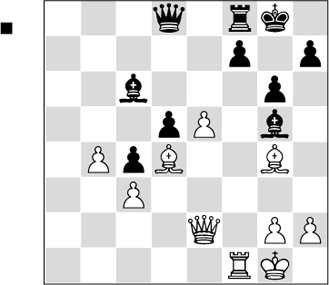
The threat is e5-e6.
Black decided on
28h5
He drives the bishop from the key square e6, but further weakens his kingside.
One feels that the position should contain a combination. How to execute it?
The great Indian talent Viswanathan Anand does so faultlessly:
29.Bh5! gh5 30.Qh5 Be8
Possibly Black calculated as far as this position and only considered 31.Rf3. Then 31f5, and the attack can be beaten off.
But there followed:
31.Rf6!
With this blockading sacrifice of the rook, White fixes the f7-pawn in place and the black king faces one deadly threat after another.
Not 31Bf6 32.ef6, whilst after 31Bd2 White wins with 32.e6! with the threat of 33.Rg6+! fg6 34.Qh8# mate.
So Black resigned.
In his book of best games, Anand writes that he was helped in finding 31.Rf6! by knowledge of the following classic combination.
Robert Fischer
Pal Benko
New York 1963
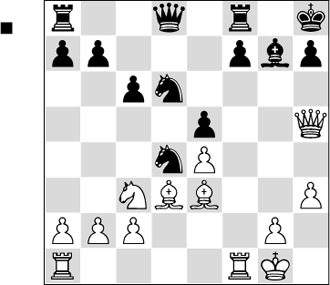
Black to move. He should have played 17Ne6, and the battle would all lie ahead. But he played:
17Qe8 18.Bd4 ed4
Intending the defence 19.e5 f5.
There followed, however,
19.Rf6!!
The same blockading sacrifice of the rook, fixing the f7-pawn, and on 19Bf6, the move 20.e5 decides.
19Kg8 20.e5 h6 21.Ne2
Black resigned.
I will ask you a question: how important was it for Anand to know the source game for this combination? How important was it to scour books and databases, to establish that Fischer was the first to use it?
The answer is obvious it was not of the slightest importance or necessity. He demonstrated a high level of erudition and excellent sporting qualities. It is one thing to know that Fischer once played such a combination, but quite another to recall the details in the stressful conditions of a sporting contest. But the task of identifying the original source is a job for the historian, book author and journalist.
Akiba Rubinstein
Eugene Znosko-Borovsky
St Petersburg 1909
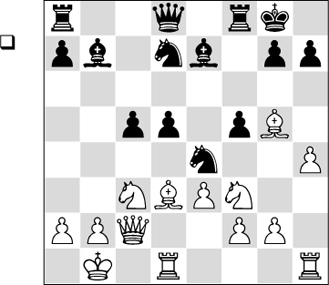
Black has played the opening poorly. The position has opened up, and the opposition of the rook on d1 and queen on d8 causes Black much disquiet. Another basis for a combination is the diagonal a2-g8; if the pawn is removed from d5, then after a queen check on b3, the bishop on b7 would be hanging. White needs to show good and accurate calculation. There are so many tempting options that ones eyes glaze over. Rubinstein played precisely:
14.Ne4!
Less good is 14.Be4 fe4 15.Ne4 Qe8.
14fe4 15.Be4! de4 16.Qb3+ Kh8 17.Qb7! ef3 18.Rd7 Qe8
Or 18fg2 19.Rd8 gh1Q+ 20.Qh1 Rfd8 21.Be7.
19.Re7
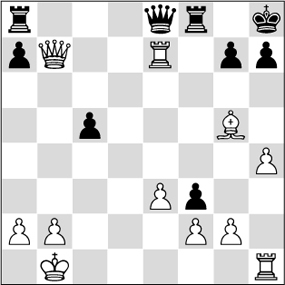
The forcing variation has ended. White has not only regained his material, but also has an extra piece.
Victory is quite close. However, White needs to preserve accuracy to the very end.
19Qg6+ 20.Ka1
It is understandable that White wants to move his king as far away from enemy eyes as possible. But 20.Kc1 was actually more accurate, and if Black replies 20Rab8 21.Qd5 Rbd8, then 22.h5! Qa6 23.Rf7!, suppressing any counterplay.
20Rab8 21.Qe4
Now 21.Qd5 Rbd8 22.h5 would be bad, because of 22Qh5! 23.Rh5 Rd5.
21Qe4
Bad is 21fg2 22.Qg2 Qc2 due to 23.Bf6!.
Next page
